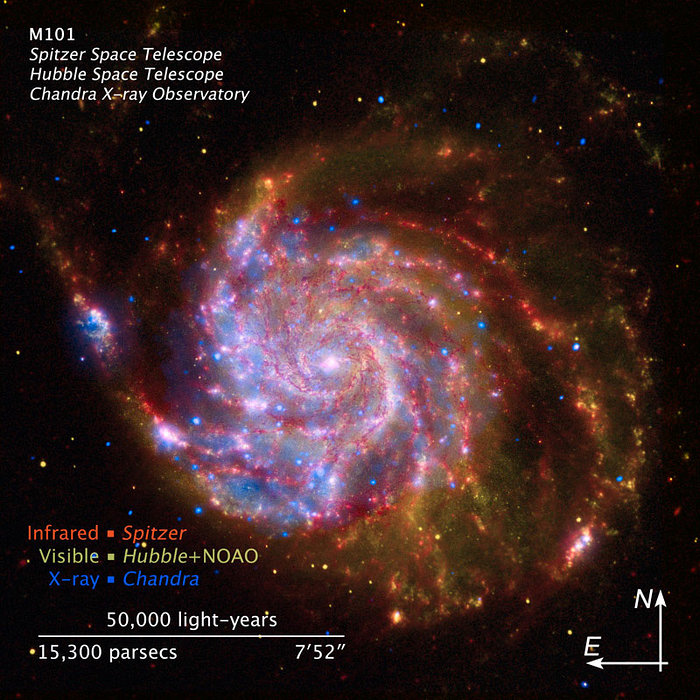Compass and scale illustration for M101
This composit picture of the spiral galaxy M 101 uses data received from the three most advanced space telescopes and the National Optical Astronomy Observatory (NOAO)
Red colors indicate emissions in the infrared observed by the Spityer Space Telescope and show the distribution of dust and gas in the galaxy along the spiral arms. Blue colors show X-ray sources observed with the Chandra X-Ray Observatory. These areas are hot and high energetic due to exploded stars, superheated gas and material falling toward black holes. Brown-beige colors finally shows the part of the galaxy which would also be visible for the human eye and composes of pictures taken by Hubble and the NOAO.
M 101, located more than 21 million light years from Earth in the constellation Ursa Majro, is a relatively large spiral galaxy compared to the Milky Way. It is noted for its high population of H II regions and its strong star fomation activity. In 2011 a Supernova was discovered. This was the fourth observed supernova in M 101 since 1907.
Credit:NASA, ESA and Z. Levay (STScI)
About the Image
About the Object
| Name: | Messier 101, NGC 4547, Pinwheel |
| Type: | Local Universe : Galaxy : Type : Spiral |
| Distance: | 22 million light years |
| Category: | Galaxies |
Colours & filters
| Band | Wavelength | Telescope |
|---|---|---|
| X-ray Hard X-ray |
Chandra
ACS | |
| Optical B | 435 nm |
Hubble Space Telescope
ACS |
| Infrared Near-IR | 8.0 μm | Spitzer Space Telescope IRAC |
